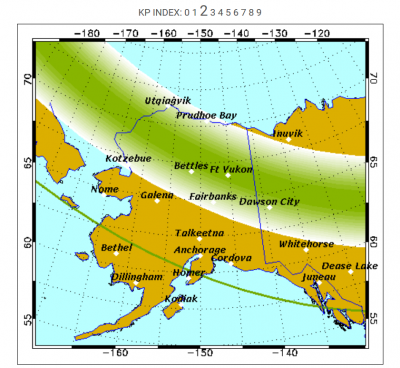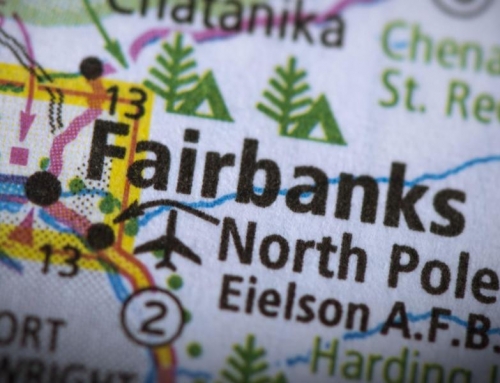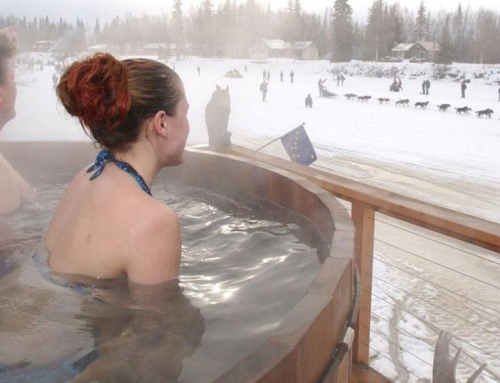How do I Figure Out the Aurora Forecast?

Greetings, everyone– I’m Northern Lights Ned and I’m here to remind you that there is a science to your Alaskan Adventure. Most notably, today we are going to learn today about the science of forecasting the Aurora Activity. There has been much work done by local experts to make some great tools that are available to everyone!
“How do I plan this Adventure to see the Aurora, Ned?”
Of course, we understand the most important items to consider when planning your winter vacation to Fairbanks to come see the aurora would consist of the following:
- Am I actually going to see the aurora when I am in (or around) Fairbanks?
- How can I know for sure?
- But, I really want to know for sure because this is the trip of a lifetime!
I have good news and less-than-good news for you…
The less-than-good news is that the aurora can never be completely guaranteed because of its very nature as a natural phenomenon. Certainly that ounce of mystery adds to the majesty of seeing them– if you are lucky enough to see the northern lights, then your experience has been made that much more special. This is very similar to having a clear view of Mount Denali– sometimes unfortunately weather gets in the way, but if you are able to see it you are part of that exclusive club that gets to brag and say they saw it!
I did mention there was good news, though…
The good news is that our local experts have been able to forecast auroral activity to a degree!

UAF Geophysical Institute Aurora Forecast
The first tool for your aurora forecasting toolbox is the University of Alaska (UAF) Geophysical Institute’s Aurora Forecast — https://www.gi.alaska.edu/monitors/aurora-forecast. This site is one of the main authorities when it comes to the local aurora forecast in Fairbanks, Alaska. The UAF Geophysical Institute is staffed with scientists– renowned in their fields– that continuously study many of the natural phenomena that occur in the Arctic and circumpolar north– one of which is the aurora! The penultimate measurement that the UAF geophysical institute utilizes to forecast the auroral activity is what is referred to as the Kp index. The Kp index is the 1-9 scale that describes the intensity of the geomagnetic activity that the sun’s solar storms are producing– ‘one’ being a low activity and ‘nine’ being very high activity; however I have personally never seen higher than a ‘six’, which is very significant on this scale. This activity directly correlates to where the aurora is seen on the globe. The larger the Kp index, typically the larger green band you will see on the aurora map. As I mentioned in my article describing the science behind the aurora, in periods of higher geomagnetic activity the aurora can be seen further and further south on the globe.
Now I must add a caveat here– a higher Kp index and wider band across Alaska looks very impressive and exciting, but in my experience it does not always mean that an amazing northern lights show is guaranteed. I have found that if Fairbanks is closer to that “hot-spot” along the middle of the auroral band, then the likelihood of a stronger presence of the aurora is much more.
Explore Fairbanks Aurora Tracker
The UAF Geophysical Institute Aurora Forecasting also only measures the activity of the phenomenon– but what about all of the other factors that play into an amazing northern lights show? Factors such as weather and sunlight can be very limiting when it comes to planning your winter activities once you arrive in Fairbanks. Allow me to present to you the next fantastic tool for forecasting the aurora: the Aurora Tracker operated by Explore Fairbanks — https://www.explorefairbanks.com/explore-the-area/aurora-season/aurora-tracker/. Explore Fairbanks is our local premier visitor’s bureau, and the staff has produced a three-day outlook for the aurora that figures in the following: the Kp index as provided by the UAF Geophysical Institute, the weather, and the daylight– the three main factors for aurora viewing. Depending on the desirability of these three factors, a scale is produced for easy aurora tracking: Below Average, Average, Above Average, and Excellent. But wait– it doesn’t stop there! This one-stop shop for aurora forecasting also goes further to offer the 3-day outlook to FIVE different popular aurora viewing locations in the Interior of Alaska– Fairbanks, Chena Recreation Area, Murphy Dome, Cleary Summit, and North Pole– as well as Coldfoot, Alaska which is…Interior-adjacent for our friends headed up to the Arctic Circle. At this point in time, this is the most comprehensive, most user-friendly, and most-utilized aurora forecast tool that is accessible to everyone.

The Explore Fairbanks Aurora Tracker is a personal favorite of mine! I like that it takes all the best information and compiles it into a nice, easy-to-read format!

Nifty Apps for your Phone
We would be remiss if we did not mention that there are many honorable mentions on Facebook for aurora forecast tools– and most of these are operated by local tour guides and companies. They offer a true, boots-on-the-ground expertise and can also be very reliable. Be sure to check them all out along with our recommended UAF Geophysical Institute Aurora Forecast or the Explore Fairbanks Aurora Tracker tools! Also, if you have any questions– feel free to reach out to your preferred tour operator, Explore Fairbanks, or even the front desk staff at your hotel of choice! We are all here to help and offer our local know-how!

Hopefully these can be some great resources as you plan your trip to Fairbanks to see the Aurora. We know that the aurora can be a little bit of a gamble– but we want to make sure that the odds are as much in your favor as possible with the right tools! As we say here in my lab– when we understand how it all works, Alaska is all the more grand! Enjoy your visit to Alaska!
-Northern Lights Ned
Check out more science articles written by me HERE






